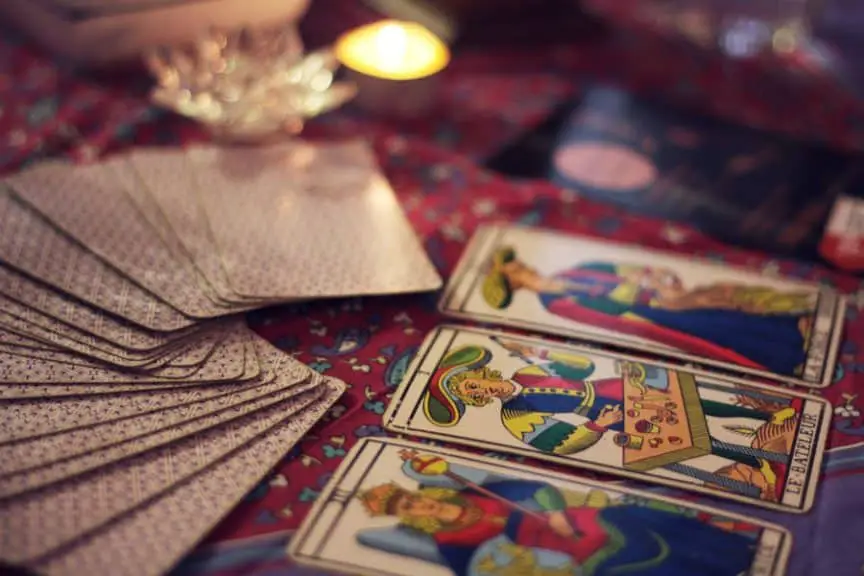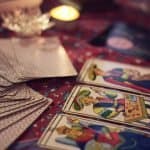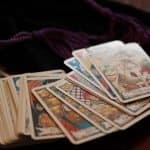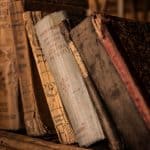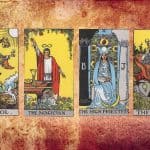This is the second part of our article on Tarot history. If you want to read the previous part, about the history of Tarot from 14th to the 19th century, please click here.
20th century
Main characters of this period were:
Arthur Edward Waite was born in Brooklyn in 1857. After the death of his father went to England with his mother. Waite was raised a Catholic and made a living from translating, writing, and reviewing books on occult topics.
In 1891 at the age of thirty-four years, he entered the Hermetic Order of the Golden Dawn. He was the Order’s ninety-ninth initiate but soon left, only to rejoin in 1896.
Aleister Crowley born Edward Alexander Crowley; (1875 – 1947) was an English occultist, ceremonial magician, poet, painter, novelist, and mountaineer. He adopted the name Aleister in 1895 when he was 20 years old. In 1898 he joined the esoteric Hermetic Order of the Golden Dawn, where he was trained in ceremonial magic by Samuel Liddell MacGregor Mathers and Allan Bennett.
Crowley and Mathers became friends and they developed the Celtic mysteries but quickly the Rites of Isis replaced them.
In 1909, published his book Liber 777 (Aff.link)which contained the Golden Dawn’s secret attribution of Hebrew letters to tarot trumps as well as extensive lists of other correspondences from many traditions.
In 1944 Crowley published the “Book of Thoth: A Short Essay on the Tarot of the Egyptians” which described the use of Aleister Crowley’s Thoth Tarot. The deck was never published during the lifetime of Crowley.
Major Grady L. McMurty published it in 1969 and from that point, it became one of the best-selling and most popular Tarot Decks in the world.
By the time of the twentieth century, the tarot’s transformation from a game into an esoteric device was complete.
Two Golden Dawn members who would play a significant role in the evolution of tarot were Arthur Edward Waite and Aleister Crowley. Crowley made even more correspondences between the tarot trumps and other esoteric systems.
But it was Waite who was to be the main innovator by designing a deck in which the minor arcana or pip cards were illustrated to facilitate divination. The deck that he designed, known as the Rider-Waite deck, was to become the most popular in the history of the tarot. (Further reading: “Understanding the Esoteric Meaning of Major Arcana”)
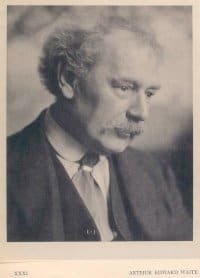
In 1909, Arthur Edward Waite published his own tarot deck without violating the secrecy of the Order.
Under his supervision, a unique 78-card Tarot pack known as “Rider Deck” was drawn by Miss Pamela Colman Smith, an American girl who was a fellow member of The Order of the Golden Dawn.
This deck became the first commercially available tarot deck in England and remained the most popular.
The exceptional feature of the Rider Deck is that all of the cards, including the forty pip cards, are presented in emblematic designs, which are readily suitable for divination.
The trump cards were numbered I to XXI with the Fool, being unnumbered, designated as 0, in front of The Magician in attribution to the first letter of the Hebrew Alphabet, Aleph. The suits signs of Swords, Wands, Cups, and Pentacles were retained, as in the Golden Dawn decks.
This transformation of minor arcana cards, from ordinary playing cards to a powerful symbolic illustration facilitates the tarot’s role in divination.
The names of the trumps basically followed those attributed by Mathers, except the trump XXI which became the World rather than the Universe. Waite maintained the positions of Strength and Justice at VII and XI position respectively.
The fifteenth-century deck known as the “Sola-Busca” deck (photos of which are in the British Museum) also followed the same design and it seems likely Waite and Colman Smith used it as inspiration.
Do you want to learn more about the Tarot? Check out our recommendations at “Tarot Bookshelf” and many free resources at our “Free Tarot Library”
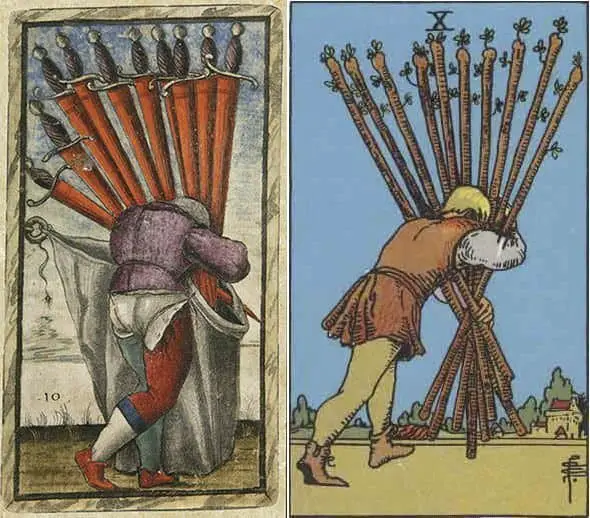
Many of the ideas for his symbolism derived from the works of Éliphas Lévi, Paul Christian, and Papus. Acknowledging the work of Mathers and Papus he wrote: ‘We get, as it were, a spiritual history of man, or of the soul coming out from the Eternal, passing into the darkness of the material body, and returning to the height.’
The astrological and Kabbalistic correspondences became apparent in Waite’s deck. These correspondences were identical to those set out in the teachings of the Golden Dawn
- On trump II the High Priestess rested her foot on a crescent moon.
- On trump III the Empress, there is a heart-shaped shield bearing the sigil of Venus.
- On trump IV, the Emperor, the arms of his throne were capped with rams’ heads signifying the astrological sign of Aries.
Rosicrucianism symbolism, roses, and crosses were found throughout the trump cards.
- On trump XIII, the figure of Death carries a flag that displays the Mystic Rose which signifies life.
- On trump 0, the Fool holds a white rose in his left hand.
Freemasonry symbolism could be found,
- On trump II, the High Priestess, in the black and white pillars of Jachin and Boaz
- On trump VII, the Chariot, in the presence of the sphinxes.
Christian mysticism and so its symbolism was everywhere evident in the pack.
- On trump VI, the Lovers, appear in the figure of Eve.
- On trump XXI, The World, appears the Four Living Creatures of Ezekiel.
The symbolism for the ascent of spirit was apparent in the depictions of the Sun’s path represented the journey of the soul.
In the following years, Waite stated that he did not believe that there was a valid correspondence between the trump symbols and the Hebrew alphabet. Instead, like W. B. Yeats, he came to see correspondences between the tarot suits and the Grail Hallows or Talismans of Celtic myth.
Eventually, he linked tarot with the Celtic mysteries by creating a ‘spread’ or method of laying the cards out which he called ‘an Ancient Celtic Method of Divination’. The spread became known as the ‘Celtic Cross’ and it remains one of the most popular used for tarot divination.
Except for France and Britain, there was also considerable interest in tarot as an esoteric device elsewhere in Europe.
In Germany, the most renowned author was August Frank Glahn. He published the book “ The German Tarot-Book: Prediction/Astrology/Wisdom, Three Levels of Initiation” in 1924, which became very popular and sold with a pack of tarot cards designed by Hans Schubert of Reinfeld.
In Russia, at the beginning of the twentieth-century French occultism was very popular.
Gregory O. Mebes lectured extensively on tarot and in 1912, these lectures were published as a book, “Course on an Encyclopaedia of Occultism”, the term ‘Encyclopaedia’ referred to tarot.
The most influential Russian tarot author was Pyötr Demianovich Ouspensky. His book “The Symbolism of the Tarot” was published in 1912, but fifteen years later he revised his ideas and published a new book “A New Model of the Universe“(Aff.link). In this book, Ouspensky analyzed some old schools of thought and tried to explain them in light of modern discoveries and ideas.
Another significant Russian author was Mouni Sadhu, who wrote: “The Tarot: A Contemporary Course of the Quintessence of Hermetic Occultism”(Aff.link), which was published in 1962 and remains in print today.
In America, occult society had its own development, with its own societies, magical orders, and American branches of European esoteric institutions. Tarot was an integral part of this occult environment with several significant books and decks being produced.
But, even though there were great authors (their material derived primarily from the Golden Dawn), their influence on the development of taro was not as significant as of the British occultists.
Do you want to learn more about Tarot? Check out our recommendations at “Tarot Bookshelf” and many free resources at our “Free Tarot Library”
The Hermetic Order of the Golden Dawn proved to be extremely influential in all contemporary tarot methods. The tarot decks created by Arthur Edward Waite and Aleister Crowley, both of which come from the Golden Dawn tradition, have remained extremely popular.
Many of the esoteric traditions from Victorian England that influenced the basic teachings of Golden Down, remain popular and characterize the New Age movement.
With the New Age movement, the tarot evolved once more. Its divinatory role has changed, and where it was once used for future-telling, in New Age shifted into self-transformation and healing.
Like previous times in history, the symbolism reflected the many thought streams that the New Age movement represented. Once again tarot became an integral part of this environment.
Tarot symbolism, particularly the major arcana, increased in order to incorporate many new cultures, alternative healing, modalities, and science, reflecting the tendencies of this new movement.
As a result, new tarot decks emerged, like
- Feng shui tarot,
- Astrological tarot,
- Buddhist tarot
- Feminist tarot
- Environmental tarot
- Alchemical Tarot
- Ceremonial Magic Tarot
Most modern users of tarot are completely unaware of its origins in the courts of northern Italy. It began its life as a game, only for recreational purposes. It contained no secret knowledge or wisdom, nor could provide guidance for the future.
However, the history of tarot is fascinating. Despite its humble origins, underwent a radical change and transformed from a game to an integral element in the evolution of esoteric and occult society.
Tarot use as a fortune-telling method is confusing with many diverging opinions, but its value as an esoteric instrument is commonly accepted.
If you want to study in detail the history of the Tarot, I strongly recommend the work of Helen Farley “A cultural history of Tarot – From entertainment to esotericism” (aff.link)
(Also read: The Best Tarot Books For All The Occult Students)
Stay in Touch
 Join our newsletter by using the forms on this website or click here!
Join our newsletter by using the forms on this website or click here! Follow us on Google News
Follow us on Google News Follow us on Facebook
Follow us on Facebook
Featured Image By Pixabay.
Bibliography
- Helen Farley, “A cultural history of Tarot – From entertainment to esotericism” 2009 (aff.link)
- Papus, “The Tarot of the Bohemians” 1896 (aff.link)
- Paul Huson, “Mystical Origins of the Tarot: From Ancient Roots to Modern Usage” 2004 (aff.link)
- Arthur Edward Waite, “The Pictorial Key To The Tarot” 1911 (aff.link)
- Chatto, “Facts and Speculations on the Origin and History of Playing Cards in Europe” 8vo. (aff.link)
- Aleister Crowley, “The Book of Thoth: A Short Essay on the Tarot of the Egyptians” 2011. (aff.link)

